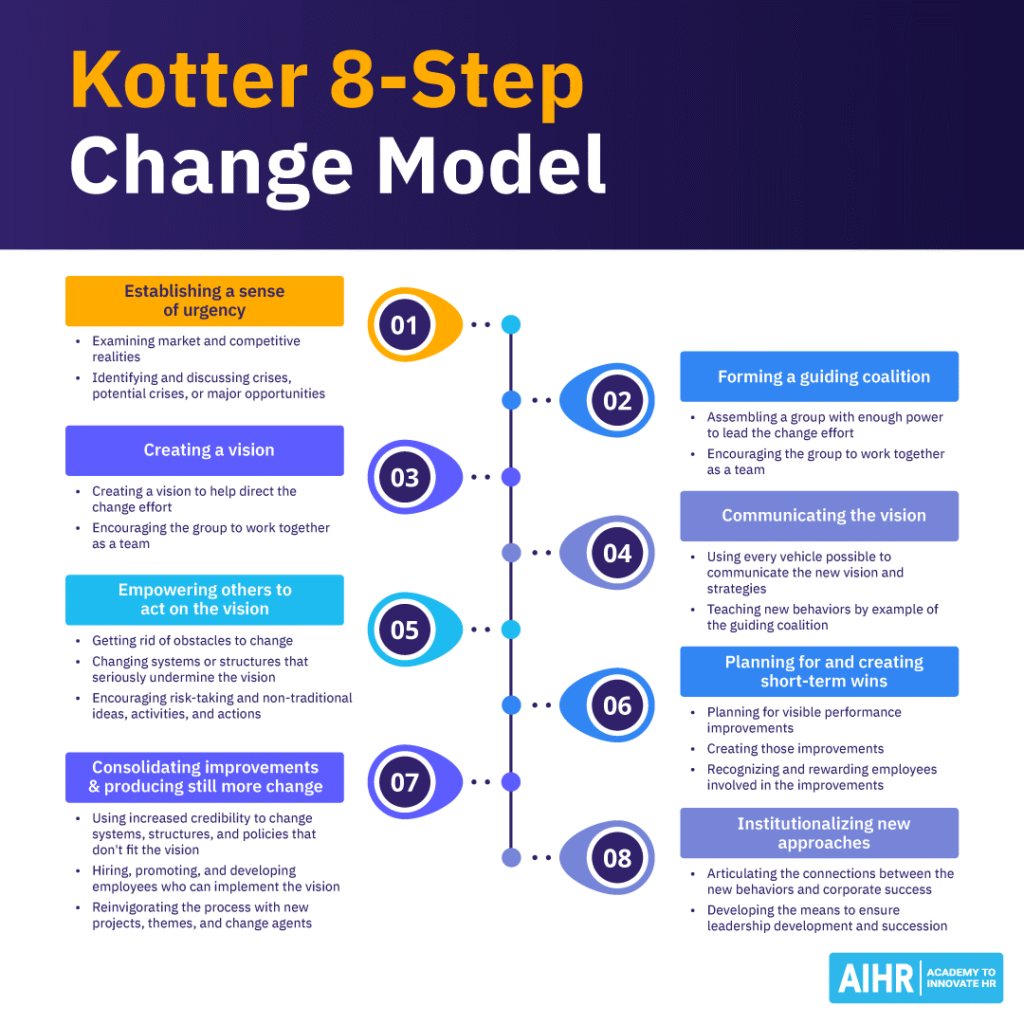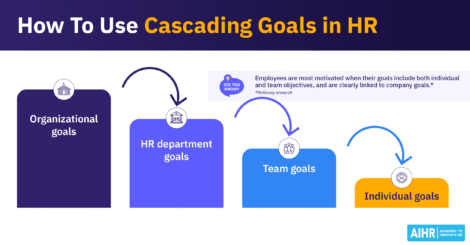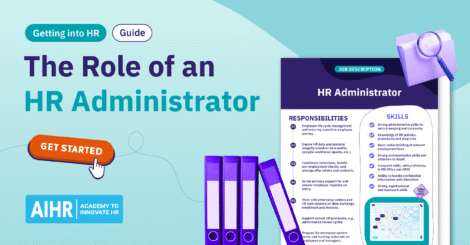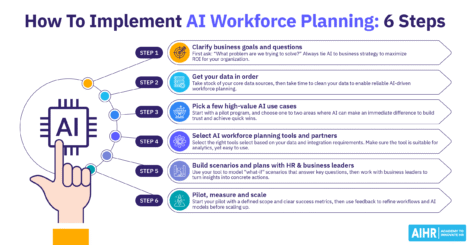Cultural transformation is the process of turning shared values into measurable performance. According to Gallup, employees who feel deeply connected to their workplace culture are 3.7 times more likely to be engaged and 5.2 times more likely to recommend their organization as a great place to work. Even a 10% boost in alignment between personal purpose and company mission can reduce turnover by more than 8% and increase profitability by over 4%. Culture, in other words, isn’t just sentiment; it’s strategy.
As organizations evolve through digital, structural, and market change, culture becomes the bridge between vision and execution. Research from BCG shows that companies that actively shape their culture are five times more likely to achieve successful transformation and 80% more likely to reach breakthrough performance. When cultural change is clearly defined, lived by leaders, and reinforced through behavior, it creates workplaces where people don’t just adapt to change; they lead it.
Contents
What is cultural transformation?
The benefits of cultural transformation
How to recognize the need for cultural transformation
Cultural transformation examples
Cultural transformation tools
The role of leadership in cultural transformation
Change management in cultural transformation
9 steps for a successful cultural transformation
What is cultural transformation?
Cultural transformation is the intentional process of reshaping the shared values, behaviors, and systems that define how people within an organization think and act. It goes beyond slogans, posters, or communication campaigns. Instead, it focuses on redesigning the unseen frameworks that influence decision-making, collaboration, and accountability.
As Harvard Business Review explains, culture shapes everything from employee engagement and brand reputation to risk tolerance and a company’s ability to adapt to change. When these systems become disconnected from organizational goals, transformation becomes essential to restore alignment, strengthen performance, and maintain a competitive edge.
True cultural transformation begins with leadership. Leaders shape culture not through statements, but through consistent actions that reflect organizational values, even when those actions come at a cost. This “values under pressure” moment is where principles become real. Without clear alignment between leadership behavior, systems, and incentives, culture programs remain surface-level and rarely last. When leaders model the desired culture and redesign the structures that support it, they influence how people work, perform, and succeed together.

The benefits of cultural transformation
Cultural transformation is not about refining the company’s “vibe.” It is about strengthening the foundation for long-term performance and innovation. A healthy culture connects people, purpose, and processes so that strategy turns into meaningful action. The benefits extend across the organization—from individual motivation to brand reputation—and are most visible when leadership and systems consistently reinforce the desired behaviors.
Key benefits include:
- Stronger employee engagement and retention: People are more likely to stay and perform at their best when they feel connected to the company’s purpose and see that its values are practiced daily.
- Improved collaboration and trust: When cultural norms encourage openness and respect, silos break down and teamwork improves across departments.
- Faster decision-making: Clear expectations and aligned systems reduce uncertainty and empower employees to act with confidence.
- Greater adaptability to change: A well-defined culture gives teams the clarity and resilience they need to respond effectively to challenges.
- Enhanced customer and brand reputation: Organizations with authentic, values-driven cultures build stronger trust with customers and communities.
- Higher performance and innovation: Psychological safety and accountability foster creativity, experimentation, and problem-solving.
- Leadership credibility and alignment: When leaders live the culture they promote, they earn trust and make change efforts more meaningful and lasting.]
Cultural transformation is more than redefining values. It is about embedding them into everyday behavior, systems, and decisions. To make that happen, HR teams need strong leadership capability, data-driven insights, and practical tools that connect culture to business outcomes.
With AIHR for Business, your team will learn to:
✅ Design and lead culture transformation programs using proven HR frameworks and tools
✅ Build leadership and communication skills to model desired behaviors across the organization
✅ Use data and analytics to measure progress, strengthen engagement, and support strategic decisions
🎯 Don’t just talk about culture. Build one that drives measurable results.
How to recognize the need for cultural transformation
The signs that cultural transformation is needed often appear long before a visible performance issue or major organizational shift. They surface in everyday disconnects between what the organization claims to value and how employees actually behave. When strategy looks solid but execution falls short, when top performers leave despite competitive compensation, or when innovation slows because teams are disengaged or hesitant to take risks, these are early indicators that the culture is out of alignment.
Such signs suggest that the systems, incentives, and norms shaping behavior no longer support the organization’s direction. HR plays a crucial role in spotting and addressing these signals early to prevent disengagement from spreading and to realign behaviors with business goals.
Recognizing the need for cultural transformation begins with listening. HR professionals have direct access to the most telling sources of insight: employee feedback, pulse surveys, customer sentiment, and informal conversations. Engagement data is valuable, but qualitative cues often reveal more—such as reluctance to share ideas, low accountability, or teams working in silos despite repeated calls for collaboration. When company values are visible in branding but missing from day-to-day actions, it’s time for HR to dig deeper.
The need for transformation often becomes clear when employees start asking why things work the way they do rather than how to maintain the status quo. That curiosity signals readiness for change and gives HR a starting point for guiding meaningful cultural renewal.
Diagnosing your company culture
To determine whether your culture supports or hinders strategy, HR can conduct a structured assessment. One proven method is the Organization Culture Assessment Instrument (OCAI), developed by Kim Cameron and Robert Quinn at the University of Michigan.
The OCAI uses the Competing Values Framework (CVF) to map an organization’s culture across four core types:
- Adhocracy culture: A dynamic, entrepreneurial environment that values innovation and experimentation (the Create culture).
- Clan culture: A collaborative, people-centered culture that emphasizes teamwork, trust, and growth (the Collaborate culture).
- Hierarchy culture: A structured, process-focused culture that prioritizes stability, efficiency, and control (the Control culture).
- Market culture: A competitive, results-driven culture focused on achievement and performance (the Compete culture).
The framework evaluates culture along two main dimensions:
- Internal–external orientation: Whether the organization focuses inward on collaboration and integration or outward on customers, markets, and competition.
- Stability–flexibility orientation: Whether the organization emphasizes structure and predictability or agility and adaptability.

Using these dimensions, the OCAI produces a visual profile that compares the current culture with the desired culture. The results typically reveal:
- The dominant culture type in the organization
- The gap between current and aspirational cultures
- The strength and consistency of the existing culture
- The direction and scale of desired change
- The potential challenges and opportunities of transformation
If the OCAI results show a noticeable gap between the current and preferred culture, it indicates the need to begin a structured cultural transformation process.
HR tip
Use both data and dialogue
Culture can be measured through surveys and diagnostics, but it is best understood through conversation. Combine OCAI findings with focus groups, interviews, and open discussions to uncover the stories and experiences behind the data.
Cultural transformation examples
Cultural transformation is a strategic reset that redefines how people think, collaborate, and create value together. Across leading organizations, it has become the foundation for innovation, adaptability, and long-term growth. The following examples from Microsoft, Unilever, and Salesforce show how intentional cultural reinvention, grounded in learning, flexibility, and inclusion, can strengthen engagement and drive business performance.
Microsoft: From Know-It-All to Learn-It-All
Microsoft’s cultural transformation reignited innovation by shifting from a “know-it-all” culture to a “learn-it-all” one rooted in curiosity and growth. Under CEO Satya Nadella and Chief People Officer Kathleen Hogan, the company invested in leadership modeling, growth mindset education, and systems that made learning part of daily work. Employees were encouraged to experiment, learn from mistakes, and take ownership of their development through platforms such as Microsoft Viva Learning and LinkedIn Learning.
This shift turned learning into a core part of Microsoft’s identity and helped fuel its success in cloud computing, AI, and enterprise software.
→ Key takeaway: When curiosity and psychological safety are part of the culture, learning becomes the foundation for innovation and renewal.
Unilever: Redesigning Work and Culture for the Future
Unilever’s cultural transformation redefined what it means to be both performance-driven and people-centered. Through its Future of Work and Future of the Office (FOTO) programs, the company integrated flexibility, inclusion, and sustainability into daily operations. Initiatives such as U-Work gave employees both stability and autonomy, while redesigned offices encouraged creativity and belonging.
These efforts led to measurable results, including cost savings, improved accessibility, and higher engagement across global teams. Rather than viewing these initiatives as workplace redesigns, Unilever positioned them as a redefinition of purpose that connects people, planet, and performance within one cultural framework.
→ Key takeaway: A culture built on flexibility, inclusion, and purpose strengthens engagement and resilience across the workforce.
Salesforce: Success from Anywhere
Salesforce’s Success from Anywhere model reimagined connection and collaboration in a digital-first environment. Employees could choose between home-based, office-based, or flexible work arrangements supported by team collaboration agreements. This model promoted autonomy, trust, and inclusion while maintaining strong performance.
The results were significant. Productivity increased by 16 percent, and new initiatives such as Trailblazer Ranch supported employee wellbeing and creativity. Office spaces evolved into hubs for collaboration and community, while flexible work policies opened opportunities to attract diverse talent worldwide.
→ Key takeaway: Flexibility becomes a true advantage when it deepens connection, inclusion, and shared purpose across the organization.
Cultural transformation tools
Cultural transformation succeeds when it is supported by the right tools and systems. These tools help measure engagement, reinforce desired behaviors, and enable learning and collaboration at scale. The table below outlines key categories of tools and frameworks that help organizations embed and sustain culture change.
Feedback and engagement
Culture Amp, Peakon, Qualtrics
Tracks employee sentiment, identifies resistance points, and provides real-time data to adjust initiatives.
Recognition and rewards
Workhuman, Bonusly, Kudos
Connects recognition to desired cultural behaviors such as collaboration and innovation, making them visible across the organization.
Change management frameworks
Kotter’s 8-Step Model, ADKAR, McKinsey 7-S Framework
Provides structured methods for embedding new behaviors, sustaining momentum, and aligning sponsors of change.
Learning and development platforms
LinkedIn Learning, Degreed, Microsoft Viva Learning
Embeds continuous learning into everyday work and builds a growth mindset culture.
Collaboration and communication tools
Microsoft Teams, Slack, Zoom
Facilitates open communication, transparency, and cross-functional collaboration, which are essential for cultural alignment.
Values and behavior measurement
Human Synergistics, Barrett Values Centre, Denison Culture Survey
Measures alignment between stated values and real behaviors to identify cultural gaps.
Performance and goal alignment
Lattice, 15Five, Betterworks
Connects individual goals and feedback to organizational purpose so that culture and performance reinforce one another.
Inclusion and belonging tools
Paradigm Reach, Textio, Eskalera
Encourages inclusive language, equitable practices, and belonging through data-driven insights and training.
Wellbeing and employee experience
Headspace for Work, Limeade, Virgin Pulse
Integrates wellbeing into culture strategy to support resilience and engagement during transformation.
HR tip
Turn insights into action
Culture surveys and engagement tools are only as effective as the follow-up. Use the insights they generate to inform visible HR decisions, policy updates, and recognition programs that demonstrate how feedback leads to real change.
The role of leadership in cultural transformation
Cultural transformation depends on consistent, values-driven leadership. It is HR’s role to help leaders understand that culture is not defined by what they say, but by what they do and how they behave in moments that matter. When leadership commitment, communication, and accountability align, culture moves from theory to lived experience.
Setting the vision and modeling the change
Cultural transformation begins with a clear vision of the desired culture and visible leadership behavior that supports it. According to McKinsey, transformation programs are four times more likely to succeed when leaders actively model the cultural shifts they expect from others.
For HR, this means ensuring leaders can articulate what the future culture looks like and demonstrate it consistently. When executives show curiosity, inclusion, and accountability in their daily interactions, it signals that cultural change is not an initiative but a way of working. In hybrid and global workplaces, leadership visibility, authenticity, and consistency are among the strongest drivers of trust.
Building trust and psychological safety
Trust is the foundation of every cultural transformation. People only adopt new behaviors when they feel safe to share ideas, take risks, and admit mistakes. HR can support leaders in building this environment by equipping them with the skills to lead with empathy and openness.
Empathy and emotional intelligence are now strategic leadership competencies. When leaders show genuine interest in employee wellbeing, listen actively, and respond with understanding, they encourage engagement and initiative. This sense of psychological safety allows collaboration, innovation, and adaptability to thrive, turning culture into a shared responsibility rather than a top-down directive.
Aligning systems, structures, and incentives
Culture is sustained through what organizations measure, reward, and tolerate. HR and business leaders need to ensure that systems, structures, and incentives reinforce the desired cultural direction. This includes aligning performance frameworks, recognition programs, and decision-making processes with the organization’s values.
For example, if innovation is a stated priority, performance reviews should recognize experimentation and learning from failure, not just predictable success. When leadership and HR align these systemic levers, culture stops being a communications effort and becomes an operational strategy.
Sustaining momentum and accountability
Cultural transformation is not a project with an end date. It requires ongoing leadership attention and HR partnership. Once new cultural norms take hold, HR can help sustain progress by embedding feedback loops, celebrating milestones, and addressing misalignment quickly.
Accountability is critical. Leaders must hold themselves and their teams responsible for living the culture every day. Decisions related to hiring, promotions, or product design should all reflect the organization’s purpose and values. The most effective leadership teams view culture as a living system that evolves with the business and treat its maintenance as an ongoing strategic priority.
Change management in cultural transformation
As the word implies, transformation means change, usually dramatic and significant change. Several well-known change management models are available that organizations can use and modify to navigate cultural transformation. These include the 7-S model, Lewin’s three-step change model, and Kotter’s eight-step model.
The choice of model will vary based on the organization’s priorities and objectives. Each has pros and cons. However, generally, models are useful as a framework to guide the change process rather than dictating it.
McKinsey 7-S Model
The McKinsey 7-S Model highlights the importance of alignment between seven key organizational elements. It distinguishes between hard elements (Strategy, Structure, Systems) and soft elements (Shared Values, Skills, Style, Staff). Effective transformation occurs when all seven reinforce one another.
How to apply it:
- Start with your shared values. Determine whether they align with your structure, strategy, and systems.
- Review the hard elements. Assess how well strategy, structure, and systems support each other and identify gaps.
- Examine the soft elements. Evaluate how well leadership styles, staff capabilities, and cultural values support your goals.
- Adjust and realign. Make incremental changes, reassess the impact, and refine as needed until alignment is achieved.

Lewin’s Three Step Change Model
Kurt Lewin’s model simplifies transformation into three core stages that reflect how people experience change.
- Unfreeze: Challenge the current state and create awareness about why change is necessary. This stage helps people move beyond comfort zones.
- Change: Implement new processes, systems, or behaviors. Provide communication, support, and training to help employees adopt them.
- Refreeze: Reinforce the new behaviors until they become the new normal. Integrate them into workflows, policies, and cultural norms to prevent regression.
Why it works: Its simplicity makes it ideal for communicating and managing large-scale cultural shifts. It focuses on readiness, transition, and reinforcement—three phases that align closely with how people adapt to change.

Kotter’s 8 Steps Model
John Kotter’s model is one of the most widely used frameworks for managing organizational change. It provides a step-by-step approach that helps leaders create momentum, engage employees, and embed lasting change.
Steps to follow:
- Establish a sense of urgency
- Form a guiding coalition
- Create a vision
- Communicate the vision
- Empower others to act on the vision
- Plan for and create short-term wins
- Consolidate improvements and produce more change
- Institutionalize new approaches
Why it works: It emphasizes communication, teamwork, and continuous reinforcement. When applied to culture, it helps organizations move from awareness to adoption, ensuring that change becomes part of everyday behavior.

9 steps to a successful cultural transformation
Once you’ve identified the need for cultural transformation, the next step is to design a process that ensures lasting change. The framework below is inspired by Kotter’s change management model, adapted to the HR context. While no single approach fits every organization, these steps offer a clear roadmap for guiding cultural transformation across different industries and structures.
To illustrate how these steps come together in practice, we’ll refer to NovaTech, a fictional global technology company that successfully overhauled its culture after years of declining engagement and innovation challenges. Within four years, NovaTech aligned leadership, systems, and behaviors to build a more collaborative, learning-oriented culture.
Step 1: Identify how your culture needs to change
Start with a cultural diagnostic, such as the Organizational Culture Assessment Instrument (OCAI), to understand your current culture profile—whether it leans toward an Adhocracy (Create) Culture, Clan (Collaborate) Culture, Hierarchy (Control) Culture, or Market (Compete) Culture. Then, assess your organization’s objectives and identify how your culture needs to evolve to support your strategic direction and workforce needs more effectively.
At NovaTech, employee surveys revealed low engagement, and feedback pointed to a culture of silos and risk aversion. The company used the Organizational Culture Inventory (OCI) to diagnose its current state and discovered that excessive hierarchy and process control were slowing decision-making. Leadership concluded that shifting toward a more collaborative and empowering culture was essential to meet innovation and growth goals.
Step 2: Gain leadership commitment
Employees often look to leaders for cues on acceptable behaviors and attitudes. Leadership plays a crucial role in setting behavioral norms that reflect the organization’s values.
Every level of leadership—from senior executives to mid-level managers—must actively support the transformation. Their actions, words, and decisions must be consistent with the new culture.
At NovaTech, the CEO and senior team recognized the need to lead by example. They established a “Leaders as Role Models” program, where executives participated in coaching sessions to reflect on their own impact. Managers were chosen not just for technical expertise, but for their ability to inspire and engage others. This helped create visible alignment between leadership behaviors and the desired culture.
Step 3: Focus on key behavioral shifts
Cultural transformation requires identifying and reinforcing the specific behaviors that define the new way of working. These should be simple, actionable, and measurable. For example, moving from a Hierarchy Culture to a Clan Culture might focus on collaboration, empowerment, and open communication.
At NovaTech, leaders and HR jointly defined five “Culture Commitments” that described how employees should work together, including “Listen First,” “Share Knowledge Freely,” and “Celebrate Learning.” Sixty Culture Ambassadors from across departments were selected to provide real-time feedback on these behaviors, ensuring that cultural expectations were visible in daily work.
Step 4: Implement formal and informal interventions
Formal interventions include structural or procedural changes such as policy updates, new performance metrics, or incentive programs. Informal interventions involve the smaller, everyday actions—team rituals, leadership conversations, and peer recognition—that reinforce culture at a personal level.
At NovaTech, formal interventions included updates to the flexible working policy and performance management framework. Behavioral goals were given equal weight to business outcomes, and bonuses were partially tied to team collaboration scores. Informally, executives began hosting informal “Coffee with Leadership” sessions, providing employees with an opportunity to share ideas and concerns directly.

Step 5: Communicate change effectively
Transparent, frequent, and honest communication is key to building trust and keeping employees engaged. Clearly explain the reasons behind the transformation, what success looks like, and how progress will be measured. Adjust your communication strategy to reach all employee groups and regions effectively.
Initially, NovaTech struggled with communication silos, which led to misinformation and uncertainty. To address this, the company launched a comprehensive internal communication campaign, “Our Next Chapter,” combining leadership updates, digital newsletters, and open Q&A sessions. These efforts improved transparency and created space for honest dialogue about the company’s goals and challenges.
Step 6: Address resistance and barriers
Resistance to change is natural and should be addressed early. Identify obstacles that could prevent transformation and develop strategies to remove them. Barriers might be structural, cultural, or psychological.
NovaTech faced initial pushback from teams used to rigid hierarchies. HR worked with managers to facilitate discussions about the fears behind resistance and to reinforce the benefits of empowerment. The company also redesigned its office layout to reflect openness and collaboration, introducing shared spaces and removing executive offices. This physical shift symbolized the new culture and made leaders more accessible.
Step 7: Celebrate short-term victories
Setting and achieving short-term goals helps maintain momentum and build confidence in the transformation. Recognize achievements publicly to demonstrate progress and reinforce commitment.
At NovaTech, HR identified early wins such as increased collaboration between R&D and marketing teams. The company also introduced a “FlexWork” program, allowing employees to design their schedules and work environments. This tangible demonstration of trust and flexibility quickly became a symbol of the company’s new culture and improved engagement scores across departments.
Step 8: Reflect and recalibrate
Evaluating progress helps the organization learn from experience and adjust its approach. Conduct follow-up assessments to measure changes in behavior, engagement, and performance.
After three years, NovaTech reassessed its culture using the OCI and found a significant shift toward a more constructive and innovative profile. Employee engagement improved by 20%, turnover declined, and cross-functional collaboration became a defining strength of the organization.
Step 9: Reinforce and sustain the change
For transformation to stick, culture must become part of the organization’s identity. Reinforce the new culture through hiring, onboarding, learning, and leadership development programs.
NovaTech integrated cultural alignment into its recruitment process and updated job descriptions to reflect the new values. Leadership development programs were redesigned to focus on coaching and empathy, while onboarding sessions introduced new hires to the company’s cultural commitments. Continuous communication and reinforcement ensured that culture remained central to how NovaTech operated.
Wrapping up
Cultural transformation doesn’t end when new values are announced or behaviors are documented. It is an ongoing process of reflection, alignment, and renewal. The real challenge lies in sustaining momentum and ensuring that culture stays relevant as the organization evolves.
For HR professionals, this means staying attuned to the workforce, using both data and dialogue to understand how people feel and what they need. It also means reinforcing connections between purpose, systems, and behavior so that culture remains a living, adaptive part of the business.
To begin, assess where your organization stands today. Is your culture supporting performance or holding it back? Identify one area where you can strengthen the link between leadership behavior, employee experience, and business strategy. Each intentional step, no matter how small, helps create a culture that not only adapts to change but actively shapes it.


















